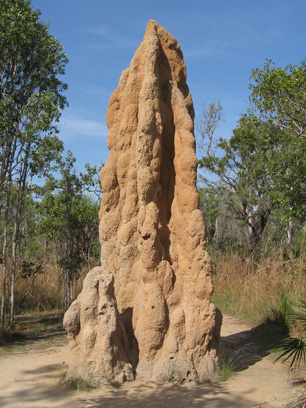Aldrin and Dieldrin
| EPA Maximum Contaminant Level (MCL) |
zero |

Aldrin and dieldrin were once used to control termites.
Aldrin and dieldrin (also known by their lengthy chemical names, abbreviated as HHDN and HEOD, respectively) are insecticides formerly used to control soil-dwelling and wood boring insects, including termites and ants. Due to their high toxicity, they have been banned in most countries since the early 1970s, but they are persistent pollutants, remaining in soil for as long as 5 years in temperate climates.
They may arrive in drinking water through banned insecticide use or industrial contaminants.
Health Effects of Aldrin and Dieldrin
Aldrin and dieldrin are highly toxic to the liver and central nervous system. Although they have been shown to cause tumors in mice, the results are not consistent across other mammal species. The World Health Organization reports:
All the available information on aldrin and dieldrin taken together, including studies on humans, supports the view that these chemicals make very little contribution, if any, to the incidence of cancer in humans.
The International Agency for Research on Cancer classifies them as Group 3—“unclassifiable as to carcinogenicity in humans.”
Water Treatment for Aldrin and Dieldrin
According to the WHO, Aldrin and Dieldrin may be treated with granular activated carbon (GAC) or ozonation.
Sources: EPA, WHO, Wikipedia, Image: WikiMedia, author: J Brew
Site Index
Filtration Systems
- Aeration for Iron & Sulfide
- Backwashing Filters
(whole house & well units)
- Chlorine & Chemical Injectors
- Countertop Water Filters
- Garden Hose Filters
- Reverse Osmosis, Residential
- Reverse Osmosis, Commercial
- Shower Filters
- Specialty Filters
- Ultraviolet Systems
- Undersink Filters
- Water Softeners
- Whole House Filters
Cartridges
Parts
- Replacement Parts
- Faucets
- Filter Media
- Fittings
- Housings
- O-rings
- Pumps
- Pura UV
- R.O. Parts
- R.O. Tanks
- R.O. Booster Pump
- VIQUA UV